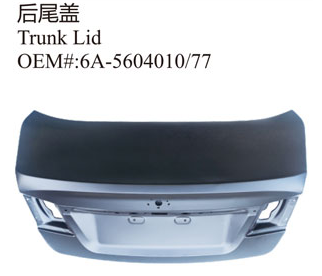When processing all kinds of customized cabinet case, air conditioner sheet metal and other sheet metal parts, automobile sheet metal parts need surface treatment, such as spraying, electroplating, anode, electrophoresis, etc. Because some materials of sheet metal do not have the function of anti rust and anti-corrosion, it is necessary to make surface treatment to achieve the effect of anti rust and anti-corrosion; in addition, the surface treatment can also achieve the effect of beautifying the product appearance.

The main purpose of surface treatment is to improve the service life of automotive sheet metal products in harsh environment (i.e. anti rust and anti-corrosion ability); to obtain the required surface effect or function (i.e. to meet the appearance requirements of sheet metal products).
In order to meet the above needs, the surface treatment processes of sheet metal products mainly include:
1. Electro galvanizing: the process of forming a uniform, dense, well bonded metal or alloy deposit on the surface of the workpiece by electrolysis.
2. Chromium plating: the process principle is the same as that of zinc plating. The chromium coating has strong corrosion resistance, which is 7-10 times of that of zinc plating. The surface is beautiful, but the cost is high.
3. Spraying: the powder is polarized and adheres to the product surface with opposite polarity under the action of electric field force. It is a physical change. It is mainly to polarize the coating (powder) through the electrode, and then carry the opposite charge to the object to be sprayed. Under the action of the electric field force, the powder uniformly adheres to the surface of the object. Powder electrostatic spraying will not cause air pollution, the powder can be recycled to reduce the consumption cost of materials, the coating performance is superior acid resistance, alkali resistance, salt corrosion resistance is good, and the adhesion is also high.
4. Electrophoresis: under the action of yin and Yang, charged coating ions move to the product surface and deposit to form coating. It belongs to chemical change. Electrophoretic paint film has the advantages of fullness, evenness, flatness and smoothness. The hardness, adhesion, corrosion resistance, impact performance and permeability of electrophoretic paint film are obviously superior to other coating processes. The most common electrophoretic color is black, and other colors are also available.
5. Dip molding: metal dip molding is a new technology processing method for metal surface anti-corrosion. Dip molding is a heating process, in which metal is preheated, dipped and solidified. When soaking, the heated metal sticks to the surrounding material. The hotter the metal is, the longer the soaking time is and the thicker the material is. Dip molding is widely used: it has rich colors, good protection, excellent cold resistance and heat preservation as well as acid and alkali resistance.
Spraying is generally paint blasting, which mainly uses compressed gas or high-speed rotating impeller to accelerate the impact of abrasive on the surface of the substrate, remove oil, rust and residues, clean and roughen the surface of the substrate, generate internal stress on the surface, and improve the fatigue strength.
The sand blasting process is also exquisite. Attention should be paid to:
1. Before sandblasting, the surface must be clean, oil-free and damp to avoid sand contamination.
2. Single side sand blasting is easy to deform and is not recommended.
3. Sand blasting is impacted by high pressure gas, which makes the workpiece easy to deform. Therefore, it is necessary to have a solid fixture as the support body, and a strong air flow leads to the four shallow sand particles, which has a certain impact on the hardware parts on the contact surface.
4. Under the action of external force (such as bending, mold forming, etc.), it is easy to make the sand grains of sandblasted workpiece fall off or cause obvious indentation.
5. The type and specification of sand are various, which should be selected according to the structural requirements and the size, shape and hardness of parts.
Copyright By © Jiangsu Halreal Vehicle Industry Co., Ltd. Powered by Yicheng Network